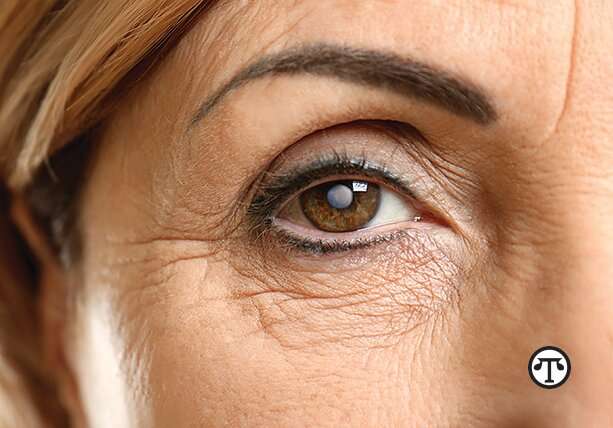FOR YOUR HEALTH: Top 5 things you can do for your family’s eye health
 From learning in the classroom to playing in the schoolyard and at home, vision is vital to how kids grow and develop – so vital in fact, that up to 80 percent of early learning is visual. Whether you’re two or 102, vision plays a key part in quality of life.
From learning in the classroom to playing in the schoolyard and at home, vision is vital to how kids grow and develop – so vital in fact, that up to 80 percent of early learning is visual. Whether you’re two or 102, vision plays a key part in quality of life.
Dr. Boateng Wiafe, technical advisor and author of The healthy eyes activity book: A health teaching book for primary schools, says there are five things everyone should do to take care of their eye health.
1. Book that annual eye exam – In Canada, some provinces offer free eye exams to children and seniors as part of provincial health care. Just like regular visits to the dentist, annual eye exams should be part of your family’s self-care routine.
2. Know the signs – Identifying a vision problem early is a critical first step. If you or a family member squints, tilts their head, closes or covers one eye, has difficulty concentrating or needs to sit close to the TV, these are all signs that a vision problem could be at play.
3. Limit screen time – A 2021 study found that extended screen time is associated with a 30 per cent higher risk of myopia (nearsightedness) and therefore needing prescription eyeglasses. When combined with excessive computer use, the risk more than doubles, reaching approximately 80 per cent.
What’s a person to do? Remember the 20-20-20 rule – every 20 minutes, look at an object approximately 20 feet (six metres) away, for 20 seconds. Pro tip: it works for both kids and adults!
4. Get outside – Getting outside to walk, play or move is a great way to take a break from screens – not to mention get some fresh air and vitamin D. According to the Canadian Association of Optometrists, increased time outdoors protects people from the onset of myopia, or nearsightedness.
5. Protect your eyes – Besides making you très cool, the right pair of sunglasses protects eyes from ultraviolet rays from the sun. Also remember to stay safe and avoid eye injuries by using protective eye gear when you’re doing household chores and ensuring your kids have the right eye protection for sports.
For adults, vision loss and lack of adequate eye health care can impact a person’s ability to work, care for their family and build social connections.
Learn more about what you can do to help make eye health services accessible for all.



 Many factors, including consuming more calories than you need from food and beverages, lack of sleep, and low levels of physical activity, may play a part in gaining excess weight. Here are some factors that may influence weight and overall health.
Many factors, including consuming more calories than you need from food and beverages, lack of sleep, and low levels of physical activity, may play a part in gaining excess weight. Here are some factors that may influence weight and overall health.

 A little help from a good coach can make a big difference in your health and happiness.
A little help from a good coach can make a big difference in your health and happiness. (NAPSI)—You may remember the old saying, “An ounce of prevention is worth a pound of cure.” That’s never been more true than it is right now about good health and older adults, especially when it comes to protecting yourself during what is commonly known as respiratory disease season (fall through early spring).
(NAPSI)—You may remember the old saying, “An ounce of prevention is worth a pound of cure.” That’s never been more true than it is right now about good health and older adults, especially when it comes to protecting yourself during what is commonly known as respiratory disease season (fall through early spring).

